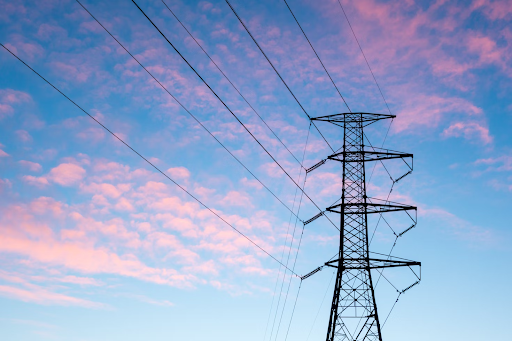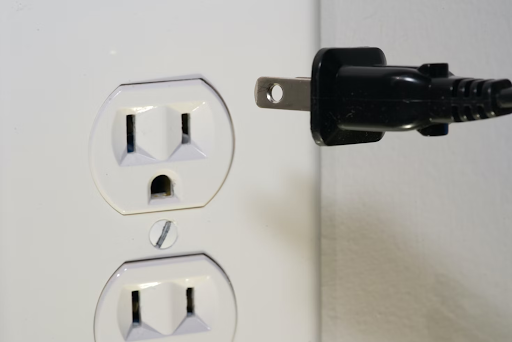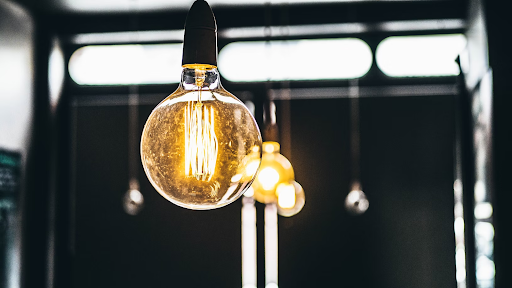Electricity costs make up a major component of most household budgets, and its rising cost may impact them significantly. There are however easy and painless ways you can conserve energy to reduce monthly bills and help conserve resources more effectively.
Some simple strategies include opening the curtains to let natural light in, switching to LED bulbs, and unplugging devices that are no longer in use. However, you should read the following article to learn about some other common ways to help your bills.
1. Turn Off the Lights
Many of us have likely been advised at some point: “Turn off the lights when leaving a room.” Even leaving lights on for just one minute can significantly increase your electricity bill and contribute to energy waste over time.
Lighting accounts for five to 10 percent of household energy use and wasteful light bulbs can add significantly to your electricity bill. Turning off lights when not needed and using natural daylight to illuminate rooms when possible along with switching to more energy-efficient fluorescent or LED bulbs are all ways you can decrease household energy usage and save money on electricity costs.
One common belief about turning lights back on again is that more electricity is consumed when doing so than leaving them on all night long, due to an initial surge of current when starting up again. But this surge only lasts 1/120th of a second and consumes no additional energy compared to normal operation; rapid on/off cycles could even shorten lifespan by half!
Turn off lights when not in a room – especially those using inefficient incandescent bulbs (the least efficient type). They use most of their energy as heat while only 10 percent actually contributes to visible illumination. Halogen, fluorescent and energy-saving LEDs require significantly less power while producing more light output.
Public perceptions regarding energy-saving behaviors remain fixed on “turning off the lights.” In our research, participants reported this was their go-to response when asked what actions could help save electricity.
One institution asked participants to rank 74 pro-environmental behaviors based on financial and behavioral costs; among these behaviors, turning off lights was found to have the lowest cost associated with environmental savings as well as financial savings.

2. Lower Your Thermostat
While summer heat can be unbearable, turning up your AC as far as it will go may help keep you comfortable; but this will come at the cost of higher electricity bills. Instead, try turning down your thermostat one or two degrees instead – doing this can save energy costs up to 1-3% per degree you reduce it; nighttime is especially effective as less energy is required to stay comfortable! This technique works especially well.
Heating and cooling account for 48 percent of household energy consumption, making reducing it an essential step to lowering energy use and your bills. To maximize its impact and get the best power available to you (which you can see here: bestestrøm.no/) try setting your thermostat back 7-10 degrees from its usual setting for eight hours every day, such as when sleeping or away from home. This can end up actually reducing costs by an estimated 10% each year.
As soon as your thermostat reaches closer to our recommended seasonal settings, gradually raise it as you adapt. This will give your body time to adapt without becoming uncomfortable; plus by making this change slowly you won’t shock your system with sudden temperature increases and risk an expensive power surge.
If you are leaving your home for long stretches (e.g. vacation or working from home), adjust the thermostat further down; this can save up to 6-8 % off of your electric bill! Additionally, you should be energy conscious with office equipment by shutting it off or setting it to “power down” when not being used.
Saving can also be achieved by adjusting your lighting and ceiling fans in cooler months to recirculate warm air back down. Be sure to switch off lights in rooms not in use and unplug electronics that continue drawing electricity when powered down – these simple steps can help lower utility bills as well as decrease pollution from fossil fuels. When taking steps like these to save electricity you will help save both money and reduce pollution levels; always consult your energy provider for personalized tips tailored specifically for you and your lifestyle.
3. Use Smart Power Strips
Many electronics use power even though they appear to be turned off, a phenomenon known as vampire power that can cost hundreds of dollars every year. An inexpensive power strip is a simple solution which stops devices from drawing electricity while they’re in standby mode.
Smart power strips resemble conventional ones in appearance but are controlled by internal circuitry to manage electrical outlets. As soon as a device plugged in goes into standby mode, this circuitry detects it and cuts power to that outlet, so other outlets on the strip remain powered as normal while saving you energy and money in unnecessary energy consumption.
Smart strips with more advanced features, including remote controlled operation and integration into home automation systems, allow for greater convenience as they also allow control of individual outlets through your phone or voice assistant – although these premium models tend to cost more.
Smart power strips generally work the same way, using internal circuitry to monitor and direct energy to outlets. When power-consuming devices such as TVs are in standby mode, for instance, this signal tells the strip circuitry to switch off all but two outlets used by audio equipment and game consoles – potentially saving energy usage on audio equipment or game consoles that wouldn’t normally require constant power like cordless phone bases and alarm systems.
Some smart power strips may offer unmonitored outlets which remain on constantly for use with such devices such as cordless phone bases or alarm systems requiring constant power consumption – such as cordless phone bases or alarm systems.
Consider selecting a model with adjustable voltage sensitivity, which allows you to set how low the strip should detect connected devices – this reduces the risk of overheating when too many heavy loads are connected at once.
Power strips are easy and affordable ways to increase the number of electrical outlets in a room, especially useful if your electronics require special power cords that may be hard to access, such as office printers, computers or plasma televisions. Plus they’re great alternatives to unplugging your gadgets whenever possible which could save up to 48% energy usage!

4. Unplug Unnecessary Appliances
Most homeowners recognize the fact that appliances like coffee makers and hair dryers consume energy when turned on; however, many don’t realize they still draw power even when off. This form of wasteful electricity, known as “phantom power,” accounts for as much as 20 percent of your electricity bill in some homes. To reduce phantom power usage in your own home simply unplugs devices when they are no longer being used; not only will you save both money and energy costs while helping save the environment as well.
Phantom power can be an additional drain on your electrical system and an expensive drain on other appliances in your house. Small power surges that occur when refrigerators and appliances remain plugged in but not used can damage their components, shortening their lifespan significantly. You can avoid this by walking through your home unplugging unnecessary devices like clock radios, programmable coffeemakers and cable TV boxes that might still be connected.
If you find that some devices are essential to living comfortably, invest in a smart power strip or adjust the settings on each of them to reduce idle electricity usage. Furthermore, look out for appliances with Energy Star labels as these consume significantly less electricity compared to most models; some models may even function efficiently even while unplugged!
Unplugging all your appliances and electronics will likely reduce your utility bills significantly, while using a wattage monitor can also help. By measuring how much electricity each device consumes, wattage monitors can easily help pinpoint those with excessive consumption; each watt can cost anywhere between one dollar to over ten dollars annually so unplugging as many devices as possible will bring greater savings – not only appliances like your fridge, oven and TV set-top box but also kitchen appliances, chargers and tools not being used can bring substantial cost reductions as well!
Most homeowners recognize that appliances like coffee makers and hair dryers consume energy when turned on. However, many don’t realize that these appliances still draw power even when they are turned off. This form of wasteful electricity, known as “phantom power,” (as I stated previously) accounts for as much as 20 percent of your electricity bill in some homes.
To reduce phantom power usage in your own home, simply unplug devices when they are no longer being used. Not only will you save money and energy costs, but you will also help save the environment.
Phantom power can be an additional drain on your electrical system and an expensive drain on other appliances in your house. Small power surges that occur when refrigerators and appliances remain plugged in but not used can damage their components, shortening their lifespan significantly. You can avoid this by walking through your home and unplugging unnecessary devices like clock radios, programmable coffeemakers, and cable TV boxes that might still be connected.





